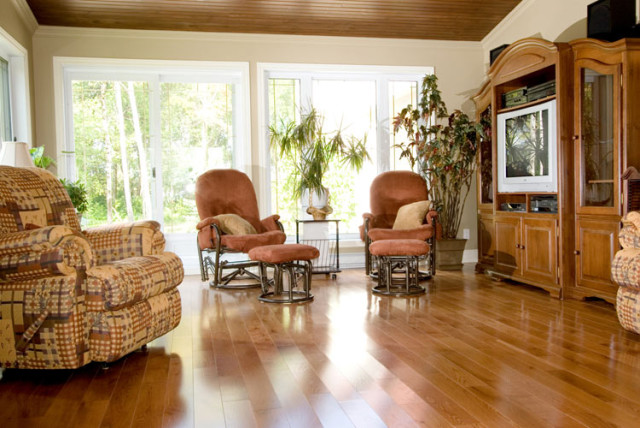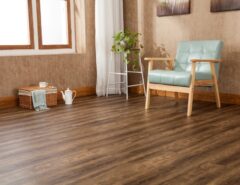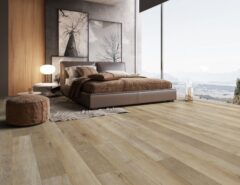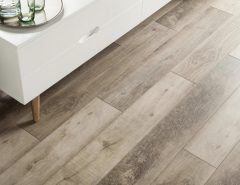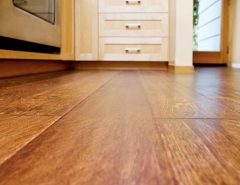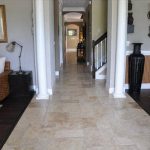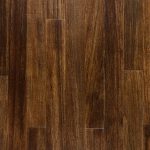Red oak hardwood flooring is a stalwart option when you’re trying to strike a balance between look, durability, and ease of installation. Here’s why red oak is an ideal balance when you’re choosing a flooring species.
***
Ready to give your home a fresh look? Hardwood is one of the surest ways to make any room look sleeker and more sophisticated while retaining that cozy, warm feeling of home. With the countless hardwood flooring options available, it can be tough to determine which type is best for your space.
For many, red oak hardwood flooring is a good place to start your search. It is in fact an industry benchmark, and for good reasons. Here, we will explore the many benefits of red oak hardwood flooring, including why is it often used as a median hardwood species by which others are often compared.
Red Oak Hardness
When it comes to hardness, red oak hardwood flooring is the center line. This is because it strikes a good balance between surface durability, and how easy it is to cut. Species on either side of the scale tend to gravitate more to one characteristic. But, how are hardwoods rated for hardness, anyway?
Wood species are rated for their ability to withstand indentations using a system called the Janka Hardness Test. Each wood species is given a number that equals the force required to embed a 0.444-inch steel ball into the wood to half the ball’s diameter.
So the higher the number rating, the harder a wood is. On the Janka scale of 0 to 4,000, red oak rates at 1,290. So, while there are much harder woods out there, this means that red oak is easily “workable” for flooring. What does “workable” mean, anyway?
Browse for unfinished red oak.
Red Oak Workability
When it comes to choosing a hardwood species, these two poles between durability and workability are very useful to the process of choosing a type of wood. Red oak hardwood flooring represents that middle ground. So, let’s talk about workability next.
How hard will your chosen hardwood be to install? Will nailing, cutting, and sanding the planks be difficult? These issues can make installation slow, more involved, and costly. Time is money, right? With that in mind, the importance of balance between hardness and workability becomes clearer.
Fortunately, red oak hardwood flooring is one of the best choices when it comes to workability. It is considered above average in terms of the ease of sawing and machining individual planks. As long as the correct sanding sequence is followed, it will also sand easily and evenly.
Nails are easy to apply as needed, and as mentioned in more detail below, red oak takes stains better than many other types of wood. Even for professional installations, choosing red oak reduces the risks of errors and setbacks when installing new flooring.
Red Oak Color and Staining
If you want to customize the exact shade of your hardwood floors, going with red oak is a smart move. That’s because red oak flooring comes in a variety of shades ranging from light to dark depending from where on the timber the wood is sourced.
On top of that, it takes stains very well due to its porous surface. This mean it’s easier to get a consistent, even color throughout each plank as opposed to a harder species with a tighter grain.

A compilation of red oak flooring angles! This one is a stained red oak hardwood flooring; “Charcoal Light” from BuildDirect to be exact.
Pre-finished or unfinished red oak hardwood flooring
Generally, you’ll have two options when selecting the red oak color you prefer. Some planks come pre-finished, so they have already been stained with a particular shade. Though it generally costs a bit more for this option, it can be an advantage for those who want to see the finished product before buying.
Other manufacturers will offer red oak flooring in an unfinished state. This allows the customer to select the finish they want and have the finishing completed on-site, which usually results in a more consistent and more resilient stain.
Browse for stained red oak hardwood.
Red Oak Appearance
One of the most distinguishing features of red oak flooring is its wide grain pattern. You’ll easily see the wood patterns when you use this hardwood for flooring. The visible grain patterns may not line up perfectly; instead, they give off a more natural, woodsy look.
However, you can actually choose various types of red oak grain patterns based on how the wood has been cut. There are three main styles:
- Plain-sawn: This type of board will have a flared or plumed grain appearance, giving it the most noticeable grain style for red oak flooring.
- Rift-sawn: These boards have low figuring and a tighter grain pattern, giving it a more subtle appearance in terms of grain visibility.
- Quartersawn: Quartersawn boards are in the middle in terms of grain visibility; they typically display a flake pattern sometimes known as butterflies or tiger rays.
Depending on your style preferences, red oak’s noticeable grain pattern may make or break your decision to choose this wood. Many people find the wider grain to be warm and welcoming. It fits in particularly well with traditional furnishings and cozy rugs, but it can also be paired with the right modern furnishings.

Jasper Hardwood Northern Red Oak Collection. Timber that is harvested from northern species offers slightly harder floor planks.
Those who don’t like the wood grain to be as apparent in their flooring can choose a more subtle alternative, such as maple or bamboo flooring. Or, if you prefer a more consistent look throughout your spaces, some retailers will “match” the planks of red oak flooring, though this may come with a slightly increased price per square foot.
Browse for red oak hardwood flooring made in the USA.
Hardwood Flooring vs. Engineered Wood Flooring
Now that you’ve considered the benefits of red oak, you might be wondering how it stacks up against engineered hardwood flooring. While there are pros and cons to each, many people prefer oak hardwood flooring for its natural grain appearance, which can certainly add “character” to a home.
Solid wood floors can also be refinished numerous times, so they typically last longer than engineered hardwood floors (which can only be resurfaced a few times). Combine that with its incredible durability, and many homeowners find choosing solid hardwood flooring to be a no-brainer.

Engineered red oak hardwood flooring “Butterscotch” from the BuildDirect Olympia series. Made in the USA.
Engineered hardwood flooring, on the other hand, is more consistent in appearance and, generally, more affordable. While it doesn’t last as long in terms of resurfacing, engineered hardwood floors are a good choice for high-moisture areas since they won’t warp or expand and contract like solid hardwood floors. This also makes them a better choice for homes in areas that experience dramatic climate changes throughout the year.
Browse for red oak engineered hardwood flooring.
An ideal floor, or ideal starting point …
For many homeowners, red oak makes for an ideal hardwood flooring option to settle on or to use as a starting point in a search for their ideal hardwood species. It offers a distinctive grain pattern which is easily customizable by way of staining, which it take to very well.
In addition to being durable, red oak is easier to install than many other types of wood flooring because it’s easy to cut and to nail. Yet it is no pushover when comes to everyday toughness needed for a long-lasting floor. These are the reasons why red oak hardwood flooring represents a middle ground when choosing a species.
From here, your journey to choosing the wood floor that will complete your space can either start or end!
***
Resources:
http://www.hoskinghardwood.com/Department/Hardwood-Floors/Wood-Hardness-Chart.aspx?dId=7&pageId=12
http://www.houzz.com/ideabooks/560662/list/your-floor-an-introduction-to-solid-plank-wood-floors
http://woodfloors.org/red-oak-species.aspx
http://www.theflooringlady.com/engineered_vs_solid_hardwood_flooring_000877.html
http://www.woodfloordoctor.com/_how_tos/particlesshort/stain.shtml








